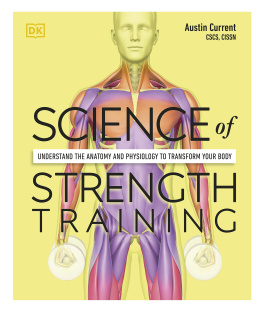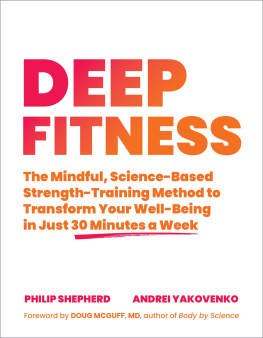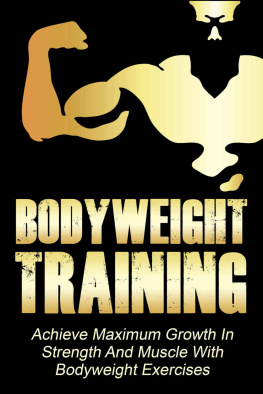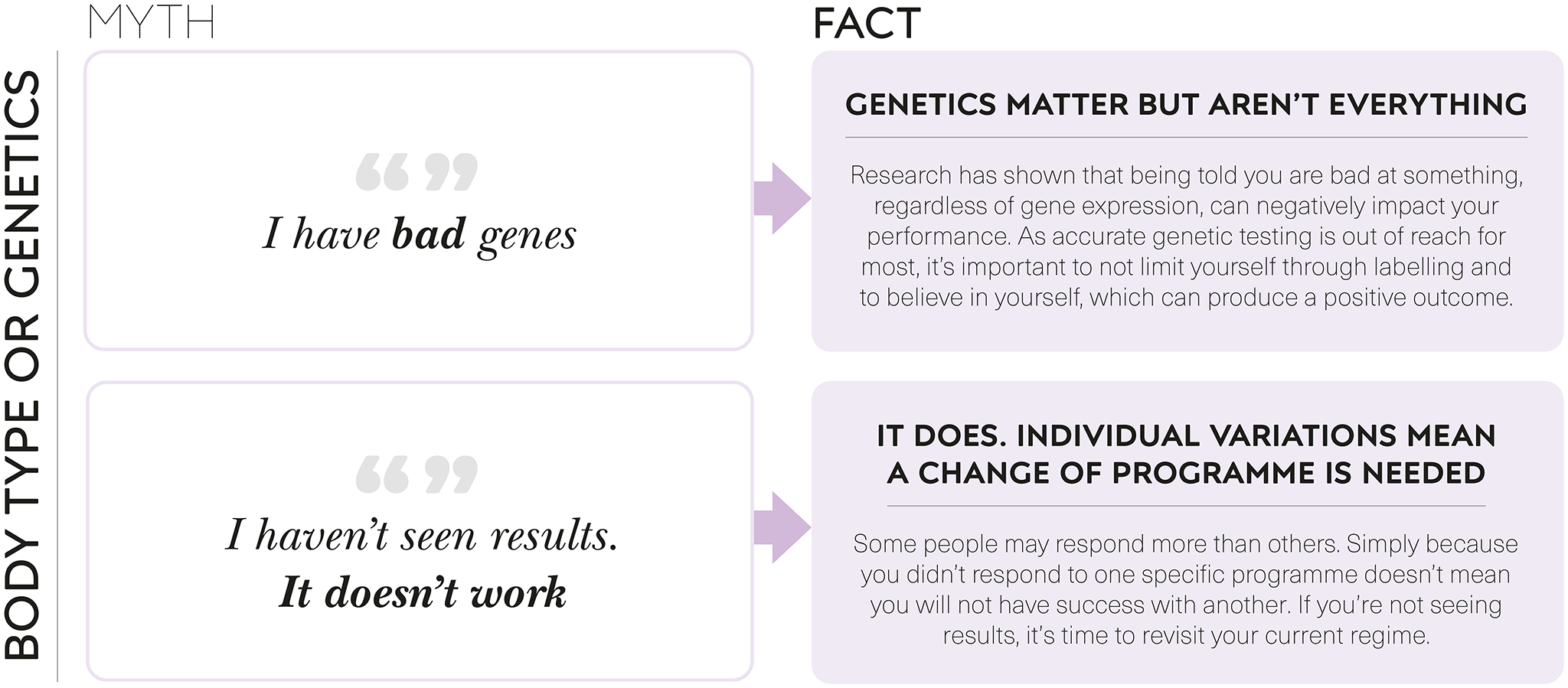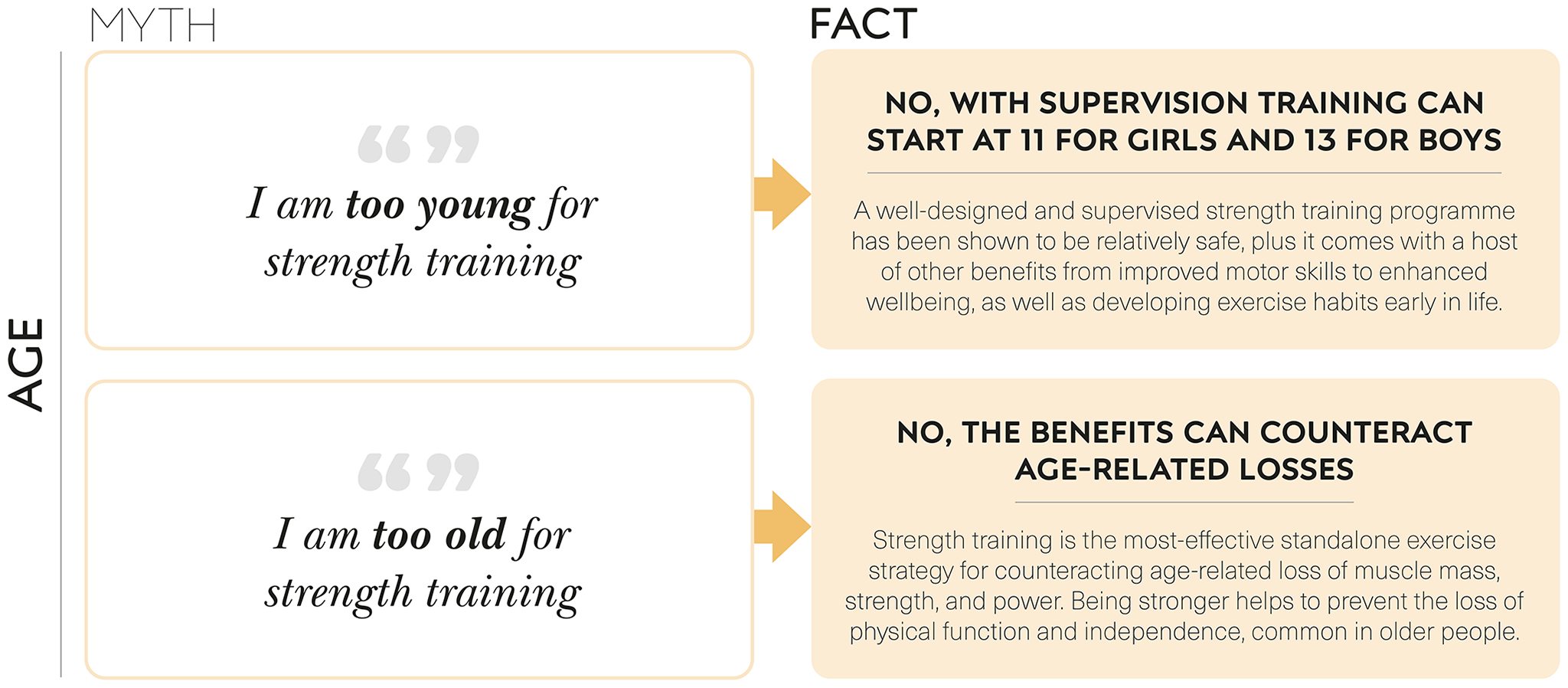introduction
When it comes to strength training , also known as resistance training, knowledge is power. Most often, the largest barrier for participation in strength training is the complexity of resistance programmes or lack of knowledge in the gym. The aim of this book is to break down this barrier, teaching you the science behind strength training, how to perform exercises properly (at the gym or at home), and offering clear and simple programmes for beginners and those wanting to challenge themselves. Whatever your current level of knowledge or abilities, youll find the information and tools you need to better learn, understand, and confidently perform strength training exercises whether as a standalone activity or in combination with other forms of exercise.
The benefits of strength training
The exercises in this book not only improve muscular strength and endurance, but also boost overall health. Incorporating strength training into your everyday life will bring with it a multitude of positive effects:
lowers the risk of a number of diseases , such as cardiovascular disease and type 2 diabetes
promotes muscle growth and retention , and counters the age-related reductions in muscle mass and muscle strength and in bone density across a lifespan
improves cognitive function, memory, and concentration
prevents age-related illness , such as Alzheimers disease and dementia
lowers the risk and the severity of depression and anxiety.
how the book works
The first section human physiology introduces you to the wonder that is skeletal muscle and the mechanisms that underpin strength trainings demands on the body. It will help you understand how muscles work and grow, and how resistance work stimulates muscles to develop size and strength, alongside its positive impacts on bones and connective tissue. It also explains how the body powers muscular work and shows you how to calculate your own daily fuel and macronutrient requirements. Last, but by no means least, comes an overview of the benefits to the brain, and the crucial role it plays in attitude and mental health.
Much of the book is devoted to a comprehensive collection of strength exercises to perform, along with many variations offered to complement your available training equipment, personal preferences, and level of challenge. The exercises are organized according to which muscle group they target. Each displays the muscles being used throughout the movement with detailed instructions on how to achieve proper form and technique; common mistakes are covered, too.
The section on preventing injury explores common injuries related to resistance work, with explanations of how to avoid them and how to return to training if you do suffer an injury. A consistent and structured routine, including a proper warm-up, prepares the body for work and the various mobility exercises and stretches given will help you tune in to how your body is responding to the training.
The how to train section outlines everything you need to know about the variables of effective strength training, such as training volume and fatigue management. Whether you want to build muscle, strength, or endurance, youll find an easy-to-follow programme to suit, as well as alternatives for those wanting to work out more often. The programmes form the base for your training and can be adjusted in the months and years to come.
Austin Current BS c, CSCS, CISSN
Fitness coach and educator
Consistent strength training improves health and wellbeing and lowers the risk of disease across a lifespan.
We know now that everyone benefits from including strength training in their day-to-day lives. There is plenty of contradictory advice out there, but take a read through this debunking of common myths related to resistance work, and discover what body type you are and if that matters.

